Features
Irish rebellion inspired Jews
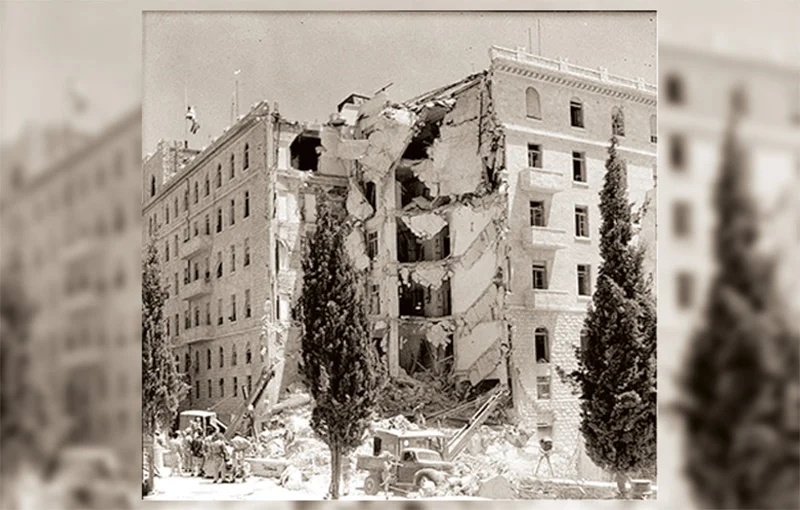
Palestine and Ireland: United by partition – II
by Jayantha Somasundaram
(First part of this article appeared
yesterday (23 Dec., 2024)
In the early years of the Twentieth Century the Irish and the Jews were unwittingly united by their military campaign against British rule in Ireland and Palestine. “Reasons for these allegiances are complex and rooted in shared experiences of imperialism” wrote M. C. Rast author of Shaping Ireland’s Independence: Nationalist, Unionist and British Solutions to the Irish Question 1909-1925 in History Today’s June 2024 edition.
Ireland is divided not only geographically between the north and south but also between Roman Catholicism and Protestant Christianity; while the Republican South is consciously pro-Palestine, Northern Ireland is pro-Israel. As the British tried to escape from the turmoil in both colonial Palestine and Ireland by resorting to partition, just as they would do in British India, the parallels become evident. The Government of Ireland Act (1920) and the Anglo-Irish Treaty (1921) only led to civil war and religious rioting; just what partition would do for Palestine and British India.
Palestine became part of the Ottoman Empire in 1516 and was fought over during World War I. The British captured Palestine from the Ottomans during the War and were mandated by the League of Nations (the precursor to the United Nations) to progress Palestine towards independence. Jewish settlers had initially welcomed the British Mandate because they believed that London would, in terms of the 1917 Balfour Declaration, create a Jewish homeland in Palestine.
Up to the first century AD Palestine had been Jewish-majority, then a Christian-majority society (second to the eleventh century) and thereafter Muslim-majority. “In 1919 there were approximately 58,000 Jews in Palestine, with ‘non-Jewish communities’ constituting 91.7 per cent of the population…by 1937 the Jewish population had risen to 386,084, comprising 27.9 per cent of the total,” explains Rast.
In the half century beginning 1880, the USA was the destination of choice for European Jews, with two and a half million migrating over that period. This tide however was stemmed when the US Congress passed the Immigration Act in 1924 limiting this flow. European Jewish immigration therefore was redirected to Palestine.
The 1937 Peel Commission would recommend partition; it used the Irish partition as its model saying that “the gulf between Arabs and Jews in Palestine is wider than that which separates Northern Ireland from the Irish Free State.” To which The Derry Journal retorted “Britain cares not a fig for the welfare of either Jew or Arab, any more than for Catholic or Protestant Irishman, except in so far as the one can be played off against the other for purposes of imperial policy.’
Irgun
As a consequence of Arab rioting in August 1929 which saw 67 Jews killed in Hebron, a tragedy that led many Jews to believe in the need for armed action, Irgun – Hā Irgun Ha-Tzvaʾī Ha-Leūmī b-Ērētz Yiśrāʾel – the National Military Organization in the Land of Israel – was formed in 1931. Until his death in 1940, its leader was Vladimir Yevgenyevich Zhabotinsky (later Ze’ev Jabotinsky) a Russian Jew. The number of members of Irgun varied from a few hundred to a few thousand. But Jabotinsky’s influence survived his early death, his ideas being carried forward by Menachem Begin (Israel’s Prime Minister 1977–1983) and the son of his secretary the Polish Jew, Benzion Mileikowsky: Israel’s current Prime Minister Benjamin Netanyahu.
Besides Irgun another important paramilitary group Lehi emerged in British Palestine. It was founded in 1940 by Avraham Stern. Stern was born in Poland in 1907 but moved to Palestine when he was 18 to study at the Hebrew University and would later join Irgun which was debating what stance should be adopted towards the British who were now fighting Nazi Germany. Stern argued that the Irish example during World War I provided the model for the Jews; to exploit Britain’s preoccupation with a war in Europe to mount pressure on them. He and his followers broke with Irgun in August 1940 and formed the Lohamei herut yisrael (The Fighters for Israel’s Freedom) or Lehi.
Stern’s ideas were taken from Mikhail Bakunin the 19th century Russian anarchist. Bakunin stressed armed struggle and Stern viewed the two millennia of exile as lulling the Jewish people into complacency. According to Professor Shlomo Shpiro of Bar-Ilan University in Israel, a specialist in intelligence, terrorism and security, for Stern the task of nation building in Palestine and the struggle for statehood would enable Jewish exceptionalism to consummate itself. “Our nation has a culture and a level of development higher than those of other nations. We have higher moral values. Some call this ‘the Chosen People.’ We must be a unique group within a unique nation.”
Lehi
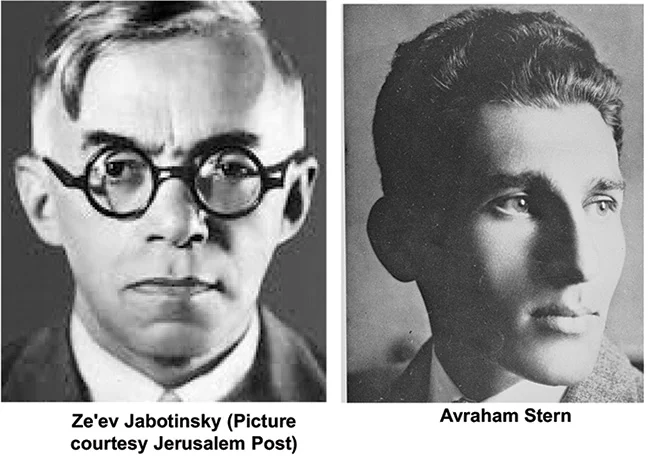
Stern believed that suffering and privation as a consequence of an armed struggle for nationhood and statehood would enable the Jews to rediscover themselves. The armed struggle must not however end with the achievement of statehood; it was a means not an end for the Jewish nation. Combat was therefore not merely the responsibility of the soldier. “Our nation will fight for a long time in its own land before it establishes its own sovereign rule…therefore, many more generations of Jewish children will go to school to learn the skills of the sword, and for many generations to come will the Hebrew Kingdom be as a military camp in the Oriental Arab desert.” Armed struggle was the duty of all; every Jew had to be a warrior. Religion more than political ends raised armed struggle to a ritual above any other facet of human endeavour. ‘‘Hallelujah with machine guns! The Lord is a Man of War! Hallelujah with battle and bomb! Hallelujah with rifle and grenade! Hallelujah to the Ruler of Zion!’’
Unlike many East European Jews who had socialist sympathies and admired the emancipation of the Jews that followed the Russian Revolution, Stern was influenced more by radical right-wing European conservative thinking and the practical gains of De Valera and the Sinn Fein in Ireland. In fact Yitzhak Shamir his lieutenant and successor adopted Michael as his nom de guerre in memory of Michael Collins, the Irish rebel.
Stern succeeded in creating a nationalist ideology with messianic Jewish elements. “Stern was the first modern Jewish thinker to propound violence and terrorism as a core ideology of national liberation and independence, rather than a temporary or expedient means of self-defence.” (SHPIRO, Shlomo The Intellectual Foundations of Jewish National Terrorism: Avraham Stern and the Lehi (Terrorism and Political Violence Vol. 25, No. 4, 2013 pp 606–620)
By early 1942 the British Police had effectively penetrated Lehi, had hunted down and killed or arrested its cadre and Stern had become a fugitive. He was finally tracked down and killed on 12 February 1942. Stern was succeeded by Yitzhak Yezernitsky (later Yitzhak Shamir) from Belarus, who would be a future Israeli prime minister (1983–84 and 1986–1992). Under Shamir, Lehi adopted Bakunin’s cell structure, became better organised, better equipped and drew new recruits enabling it to launch more effective attacks against the British in Palestine. He ordered the assassination in Cairo in November 1944 of the most senior British official in the region, the Minister Resident for the Middle East, 1st Baron Moyne, Lord Walter Edward Guinness DSO* PC.
During and after the Second World War there was a huge influx of illegal Jewish refugees arriving in Palestine in ever increasing numbers, though even as late as 1947, the Palestinians, both Muslim and Christian, still made up two thirds of the population.
King David Hotel
In July 1946 Begin directed the bombing of Jerusalem’s King David Hotel. The explosives were placed below its southern wing which “housed the nerve centre of British rule in Palestine: the government secretariat and the headquarters of both British military forces in Palestine and Transjordan and British intelligence.” (HOFFMAN, Bruce The rationality of terrorism and other forms of political violence: lessons from the Jewish campaign in Palestine 1937-1947 (Small Wars & Insurgencies Vol. 22, No. 2, May 2011, pp 258–272)
King David Hotel: After the attack
The blast killed 91 persons and injured 45 others, many of them civilians. The King David Hotel attack which is regarded as the single most lethal terrorist incident of the twentieth century secured Irgun’s political objective. It drew the world’s attention to Palestine, the struggle of the Jews and the military impotence of British colonial rule. It exposed the hollow claim of the British Mandate authorities that they were prevailing militarily against terrorism. Begin had successfully created panic among the British public and shaken their confidence in London’s ability to govern Palestine.
Back in the UK newspaper editorials swayed public opinion with this typical report in the Manchester Guardian that the bombings “will be a shock to those who imagined that the Government’s firmness had put a stop to Jewish terrorism and had brought about an easier situation in Palestine. In fact, the opposite is the truth.” (Hoffman 2011:264).
In Palestine the Mandate authority responded with harsh measures: daily curfews, cordon-and-search operations and even martial law. These extreme measures only alienated people from the British. Begin explained his strategy in these terms: “‘The very existence of an underground must, in the end, undermine the prestige of a colonial regime that lives by the legend of its omnipotence. Every attack which it fails to prevent is a blow at its standing. Even if the attack does not succeed, it makes a dent in that prestige, and that dent widens into a crack which is extended with every succeeding attack.’ Thus, even though the British forces outnumbered the terrorists by twenty to one – so that there was, according to one account, ‘one armed soldier to each adult male Jew in Palestine’ – despite this overwhelming numerical superiority, the British were still unable to destroy the Irgun and maintain order in Palestine.” (Hoffman 2011:265)
Invisible Armies
In July 1947, in response to the execution of three convicted Irgun terrorists the group publicly hung two captured British Army sergeants. According to the British Colonial Secretary Arthur Creech-Jones this outrage was the most significant factor that determined London’s withdrawal from Palestine. “For both the British public and the press, the murders seemed to demonstrate the futility of the situation in Palestine and the pointlessness of remaining there any longer than was absolutely necessary.” (Hoffman 2011:266)
Britain had deployed 100,000 troops in Palestine, saturated Jerusalem and turned it into a fortified camp controlled by barbed wire and curfews. Finally, unable to cope Britain handed the Palestine issue over to the United Nations. “In 1947 the British Cabinet decided to abandon Palestine after three years of attacks by Jewish terrorists, most belonging to the right-wing Irgun and Lehi (Stern Gang)…This was one of the most successful terrorist campaigns ever waged.” (BOOT, Max Invisible Armies (New York: Liveright Publishing 2013) p325)
Both in Palestine and globally, many Jews were critical of this terror campaign. In 1948, The New York Times published a letter signed by a number of prominent Jewish figures including Hannah Arendt, Albert Einstein, Sidney Hook, and Rabbi Jessurun Cardozo, which described Irgun as “a terrorist, right-wing, chauvinist organization in Palestine.”
Hoffman concludes that “it is indisputable that, at the very least, the successes won through violence by the Irgun clearly demonstrated that, notwithstanding the repeated denials of governments, terrorism can, in the right conditions and with the appropriate strategy and tactics, indeed ‘work’. Even if the Irgun’s success did not manifest itself in terms of the actual acquisition of power in government (Begin and his Herut Party remained in opposition for some 30 years)…their success in attracting attention to themselves and their cause, and most significantly both hastening and affecting government decision-making, cannot be disregarded… Thus the foundations were laid for the transformation of terrorism in the late 1960s from a primarily localized phenomenon into the security problem of global proportions that it is today. Indeed, when US military forces invaded Afghanistan in 2001, they found a copy of Begin’s seminal work, The Revolt, in the well-stocked library that al Qaeda maintained.” (Hoffman 2011:268).
Features
US foreign policy-making enters critical phase as fascist threat heightens globally
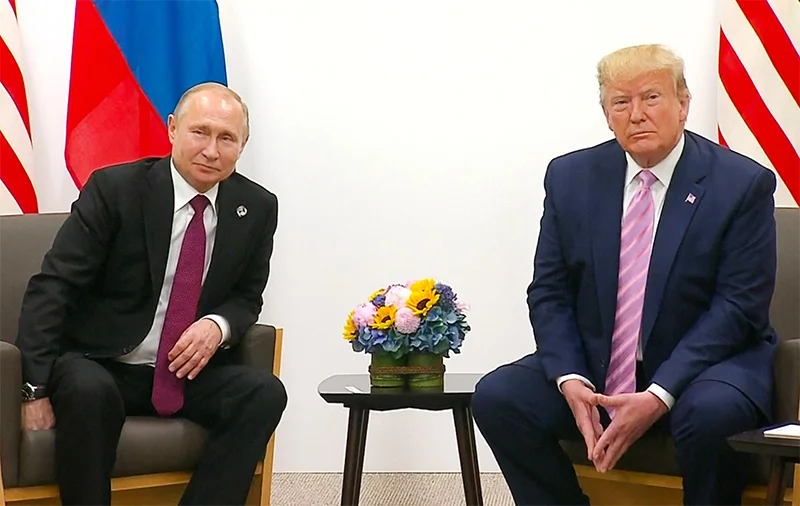
 It could be quite premature to claim that the US has closed ranks completely with the world’s foremost fascist states: Russia, China and North Korea. But there is no denying that the US is breaking with tradition and perceiving commonality of policy orientation with the mentioned authoritarian states of the East rather than with Europe and its major democracies at present.
It could be quite premature to claim that the US has closed ranks completely with the world’s foremost fascist states: Russia, China and North Korea. But there is no denying that the US is breaking with tradition and perceiving commonality of policy orientation with the mentioned authoritarian states of the East rather than with Europe and its major democracies at present.
Increasingly, it is seemingly becoming evident that the common characterization of the US as the ‘world’s mightiest democracy’, could be a gross misnomer. Moreover, the simple fact that the US is refraining from naming Russia as the aggressor in the Russia-Ukraine conflict and its refusal to perceive Ukraine’s sovereignty as having been violated by Russia, proves that US foreign policy is undergoing a substantive overhaul, as it were. In fact, one could not be faulted, given this backdrop, for seeing the US under President Donald Trump as compromising its democratic credentials very substantially.
Yet, it could be far too early to state that in the traditional East-West polarity in world politics, that the US is now squarely and conclusively with the Eastern camp that comprises in the main, China and Russia. At present, the US is adopting an arguably more nuanced approach to foreign policy formulation and the most recent UN Security Council resolution on Ukraine bears this out to a degree. For instance, the UN resolution in question reportedly ‘calls for a rapid end to the war without naming Russia as the aggressor.’
That is, the onus is being placed on only Ukraine to facilitate an end to the war, whereas Russia too has an obligation to do likewise. But it is plain that the US is reflecting an eagerness in such pronouncements to see an end to the Ukraine conflict. It is clearly not for a prolongation of the wasting war. It could be argued that a negotiated settlement is being given a try, despite current international polarizations.
However, the US could act constructively in the crisis by urging Russia as well to ensure an end to the conflict, now that there is some seemingly friendly rapport between Trump and Putin.
However, more fundamentally, if the US does not see Ukraine’s sovereignty as having been violated by Russia as a result of the latter’s invasion, we are having a situation wherein the fundamental tenets of International Law are going unrecognized by the US. That is, international disorder and lawlessness are being winked at by the US.
It follows that, right now, the US is in cahoots with those powers that are acting autocratically and arbitrarily in international politics rather than with the most democratically vibrant states of the West, although a facile lumping together of the US, Russia and China, is yet not possible.
It is primarily up to the US voting public to take clear cognizance of these developments, draw the necessary inferences and to act on them. Right now, nothing substantive could be done by the US voter to put things right, so to speak, since mid-term US elections are due only next year. But there is ample time for the voting public to put the correct perspective on these fast-breaking developments, internationally and domestically, and to put their vote to good use in upcoming polls and such like democratic exercises. They would be acting in the interest of democracy worldwide by doing so.
More specifically it is up to Donald Trump’s Republican voter base to see the damage that is being done by the present administration to the US’ standing as the ‘world’s mightiest democracy’. They need to bring pressure on Trump and his ‘inner cabinet’ to change course and restore the reputation of their country as the foremost democracy. In the absence of such action it is the US citizenry that would face the consequences of Trump’s policy indiscretions.
Meanwhile, the political Opposition in the US too needs to get its act together, so to speak, and pressure the Trump administration into doing what is needed to get the US back to the relevant policy track. Needless to say, the Democratic Party would need to lead from the front in these efforts.
While, in the foreign policy field the US under President Trump could be said to be acting with a degree of ambivalence and ambiguity currently, in the area of domestic policy it is making it all to plain that it intends to traverse a fascistic course. As has been proved over the past two months, white supremacy is being made the cardinal principle of domestic governance.
Trump has made it clear, for example, that his administration would be close to ethnic chauvinists, such as the controversial Ku Klux Klan, and religious extremists. By unceremoniously rolling back the ‘diversity programs’ that have hitherto helped define the political culture of the US, the Trump administration is making no bones of the fact that ethnic reconciliation would not be among the government’s priorities. The steady undermining of USAID and its main programs worldwide is sufficient proof of this. Thus the basis has been adequately established for the flourishing of fascism and authoritarianism.
Yet, the US currently reflects a complex awareness of foreign policy questions despite having the international community wondering whether it is sealing a permanent alliance with the main powers of the East. For instance, President Trump is currently in conversation on matters in the external relations sphere that are proving vital with the West’s principal leaders. For example, he has spoken to President Emmanuel Macron of France and is due to meet Prime Minister Keir Starmer of the UK.
Obviously, the US is aware that it cannot ‘go it alone’ in resolving currently outstanding issues in external relations, such as the Ukraine question. There is a clear recognition that the latter and many more issues require a collaborative approach.
Besides, the Trump administration realizes that it cannot pose as a ‘first among equals’, given the complexities at ground level. It sees that given the collective strength of the rest of the West that a joint approach to problem solving cannot be avoided. This is particularly so in the case of Ukraine.
The most major powers of the West are no ‘pushovers’ and Germany, under a possibly Christian Democratic Union-led alliance in the future, has indicated as much. It has already implied that it would not be playing second fiddle to the US. Accordingly, the US is likely to steer clear of simplistic thinking in the formulation of foreign policy, going forward.
Features
Clean Sri Lanka – hiccups and remedies
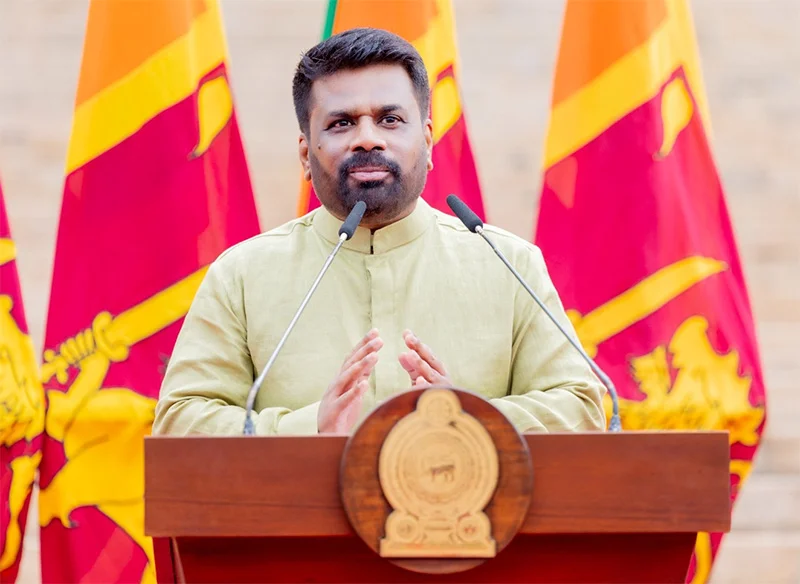
by Upali Gamakumara,
Upali.gamakumara@gmail.com
The Clean Sri Lanka (CSL) is a project for the true renaissance the NPP government launched, the success of which would gain world recognition. It is about more than just cleaning up places. Its broader objectives are to make places attractive and happy for people who visit or use services in the country, focusing more on the services in public institutions and organisations like the SLTB. Unfortunately, these broader objectives are not apparent in its theme, “Clean Sri Lanka,” and therefore there is a misconception that keeping the environment clean is the main focus.
People who realise the said broader objectives are excited about a cleaner Sri Lanka, hoping the President and the government will tackle this, the way they are planning to solve other big problems like the economy and poverty. However, they do not see themselves as part of the solution.
From the management perspective, the CSL has a strategic plan that is not declared in that manner. When looking at the government policies, one can perceive its presence, the vision being “A Prosperous Nation and a Beautiful Life,” the mission “Clean Sri Lanka” and the broader objectives “a disciplined society, effective services, and a cleaner environment.” If the government published these as the strategy, there would have been a better understanding.
Retaining the spirit and expectations and continuing the ‘Clean Sri Lanka’ project is equally important as much as understanding its deep idea. For this, it needs to motivate people, which differs from those motivators that people push to achieve selfish targets. The motivation we need here is to evolve something involuntarily, known as Drivers. Drivers push for the survival of the evolution or development of any entity. We see the absence of apparent Drivers in the CSL project as a weakness that leads to sporadic hiccups and free flow.
Drivers of Evolution
Drivers vary according to the nature of envisaged evolution for progress. However, we suggest that ‘the force that pushes anything to evolve’ would fit all evolutions. Some examples are: ‘Fitting to survival’ was the driver of the evolution of life. Magnetism is a driver for the unprecedented development of physics – young Einstein was driven to enquire about the ‘attraction’ of magnets, eventually making him the greatest scientist of the 20th century.
Leadership is a Driver. It is essential but do not push an evolution continually as they are not sprung within a system involuntarily. This is one of the reasons why CSL has lost the vigour it had at its inception.
CSL is a teamwork. It needs ‘Drives’ for cohesion and to push forward continually, like the Quality Improvement Project of the National Health Service (NHS) in England. Their drivers are outlined differently keeping Aims as their top driver and saying: Aims should be specific and measurable, not merely to “improve” or “reduce,” engage stakeholders to define the aim of the improvement project and a clear aim to identify outcome measures.
So, we think that CSL needs Aims as defined by NHS, built by stakeholder participation to help refine the project for continuous evolution. This approach is similar to Deming’s Cycle for continual improvement. Further, two more important drivers are needed for the CSL project. That is Attitudinal Change and Punishment. We shall discuss these in detail under Psychoactive Environment (pSE) below.
Aside from the above, Competition is another driver in the business world. This helps achieve CSL objectives in the private sector. We can see how this Driver pushes, with the spread of the Supermarket chains, the evolution of small and medium retail shops to supermarket level, and in the private banks and hospitals, achieving broader objectives of CSL; a cleaner environment, disciplined behaviuor, efficient service, and the instillation of ethics.
The readers can now understand the importance of Drivers pushing any project.
Three Types of Entities and Their Drives
We understand, that to do the transformation that CSL expects, we need to identify or adopt the drivers separately to suit the three types of entities we have in the country.
Type I entities are the independent entities that struggle for their existence and force them to adopt drivers involuntarily. They are private sector entities, and their drivers are the commitment of leadership and competition. These drivers spring up involuntarily within the entity.
Type II are the dependent entities. To spring up drivers of these entities commitment of an appointed trustee is a must. Mostly in state-owned entities, categorized as Boards, Authorities, Cooperations, and the like. Their drivers do not spring up within or involuntarily unless the leader initiates. The Government of a country also falls into this type and the emergence of drivers depends on the leader.
Type III entities have neither independent nor dependent immediate leader or trustee. They are mostly the so-called ‘Public’ places like public-toilets, public-playgrounds, and public-beaches. No team can be formed as these places are open to any, like no-man-land. Achieving CSL objectives at these entities depends on the discipline of the public or the users.
Clean Sri Lanka suffers the absence of drivers in the second and third types of entities, as the appointed persons are not trustees but temporary custodians.
The writer proposes a remedy to the last two types of entities based on the theory of pSE explained below.
Psychoactive Environment (pSE) –
The Power of Customer Attraction
Research by the writer introduced the Psychoactive Environment (pSE) concept to explain why some businesses attract more customers than others who provide the same service. Presented at the 5th Global Conference on Business and Economics at Cambridge University in 2006, the study revealed that a “vibe” influences customer attraction. This vibe, termed pSE, depends on Three Distinct Elements, which can either attract or repel customers. A positive pSE makes a business more attractive and welcoming. This concept can help develop Drivers for Type II and III entities.
pSE is not an all-inclusive solution for CSL, but it lays the foundation for building Drivers and motivating entities to keep entrants attractive and contented.
The structure of the pSE
The three distinct Elements are the Occupants, Systems, and Environment responsible for making a pSE attractive to any entity, be it a person, institution, organization, or county. Each of these elements bears three qualities named Captivators. These captivators are, in simple terms, Intelligent, Nice, and Active in their adjective forms.
pSE theorizes that if any element fails to captivate the entrant’s mood by not being Intelligent, Nice, or Active, the pSE becomes negative, repelling the entrant (customer). Conversely, the positive pSE attracts the entrants if the elements are Intelligent, Nice, and Active.
For example, think person who comes to a Government Office for some service. He sees that the employees, service, and environment are intelligent, nice, and active, and he will be delighted and contented. He will not get frustrated or have any deterioration in national productivity.
The Significance of pSE in CSL
The Elements and the Captivators are universal for any entity. Any entity can easily find its path to Evolution or Progress determined by these elements and captivators. The intangible broader objectives can be downsised to manageable targets by pSE. Achievements of these targets make the entrants happy and enhance productivity – the expectation of Clean Sri Lanka (CSL).
From the perspective of pSE, now we can redefine the Clean Sri Lanka project thus:
To make the Elements of every entity in Sri Lanka: intelligent, Nice, and Active.
How Would the pSE be A Remedy for The Sporadic Hiccups?
We have seen two possible reasons for sporadic setbacks and the discontinuity of some projects launched by the CSL. They are:
The absence of involuntary Drivers for evolvement or progress
Poor attitudes and behaviors of people and leaders
Remedy for the Absence of Drivers
Setting up a system to measure customer or beneficiary satisfaction, and setting aims can build Drivers. The East London NHS principles help build the Aims that drive type II & II entities. The system must be designed to ensure continual improvement following the Deming Cycle. This strategy will create Drivers for Type I & II entities.
This process is too long to explain here therefore we refrain from detailing.
Attitudinal Change
The most difficult task is the attitudinal and behavioural change. Yet it cannot be postponed.
Punishment as a strategy
In developed countries, we see that people are much more disciplined than in the developing countries. We in developing countries, give credit to their superior culture, mitigating ours as rudimental. The long experience and looking at this affair from a vantage point, one will understand it is not the absolute truth. Their ruthless wars in the past, rules, and severe punishment are the reasons behind this discipline. For example, anyone who fails to wear a car seatbelt properly will be fined 400 AUD, nearly 80,000 LKR!
The lesson we can learn is, that in Sri Lanka, we need strong laws and strict punishment together with a type of strategic education as follows.
Psychological Approach as a Strategy
The psychological theory of attitude formation can be used successfully if some good programmes can be designed.
All attitude formations start with life experience. Formed wrong or negative attitudes can be reversed or instilled with correct attitudes by exposure to designed life experiences. The programmes have been developed using the concepts of Hoshin Kanri, Brainstorming, Cause-and-Effect analysis, and Teamwork, in addition to London NTS Quality Improvement strategies.
The experience and good responses we received for our pSE programs conducted at several institutions prove and have built confidence in our approach. However, it was a time, when governments or organisations did not pay much attention to cultural change as CSL expects in the country.
Therefore, we believe this is a golden opportunity to take the CSL supported by the pSE concept.
Features
Visually impaired but ready to do it their way

 Although they are visually impaired youngsters, under the guidance of renowned musician Melantha Perera, these talented individuals do shine bright … hence the name Bright Light.
Although they are visually impaired youngsters, under the guidance of renowned musician Melantha Perera, these talented individuals do shine bright … hence the name Bright Light.
Says Melantha: “My primary mission is to nurture their talent and ensure their sustainable growth in music, and I’m thrilled to announce that Bright Light’s first public performance is scheduled for 7th June, 2025. The venue will be the MJF Centre Auditorium in Katubadda, Moratuwa.”
Melantha went on to say that two years of teaching, online, visually impaired youngsters, from various parts of the island, wasn’t an easy ride.
There were many ups and downs but Melantha’s determination has paid off with the forming of Bright Light, and now they are gearing up to go on stage.
According to Melantha, they have come a long way in music.
“For the past few months, we have been meeting, physically, where I guide them to play as a band and now they show a very keen interest as they are getting to the depth of it. They were not exposed to English songs, but I’ve added a few English songs to widen their repertoire.
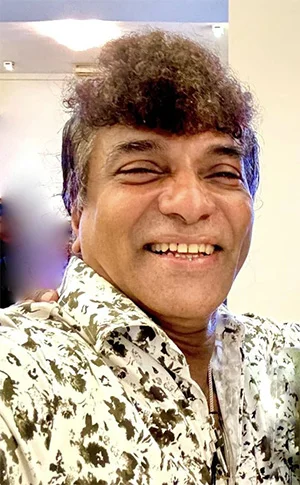
Melantha Perera: Invented a notation
system for the guitar
“On 7th June, we are opening up for the public to come and witness their talents, and I want to take this product island-wide, giving the message that we can do it, and I’m hoping to create a database so there will be a following. Initially, we would like your support by attending the show.”
Melantha says he didn’t know what he was getting into but he had confidence teaching anyone music since he has been in the scene for the past 45 years. He began teaching in 2015,
“When I opened my music school, Riversheen School of Music, the most challenging part of teaching was correcting tone deaf which is the theoretical term for those who can’t pitch a note, and also teaching students to keep timing while they sang and played.”
Melantha has even invented a notation system for the guitar which he has named ‘MelaNota’. He has received copyrights from the USA and ISO from Australia, but is yet to be recognised in Sri Lanka.
During Covid-19, Melantha showcased MelaNota online and then it was officially launched with the late Desmond De Silva playing one of his tunes, using MelaNota.
Melantha says that anyone, including the visually impaired, can play a simple melody on a guitar, within five minutes, using his notation system.
“I’ve completed the system and I’m now finalising the syllabus for the notation system.”
Melantha has written not only for the guitar, but also for drums, keyboards, and wind instruments.
For any queries, or additional information, you could contact Melantha at 071 454 4092 or via email at thebandbrightlight@gmail.com.
-

 Business4 days ago
Business4 days agoSri Lanka’s 1st Culinary Studio opened by The Hungryislander
-

 Sports5 days ago
Sports5 days agoHow Sri Lanka fumbled their Champions Trophy spot
-
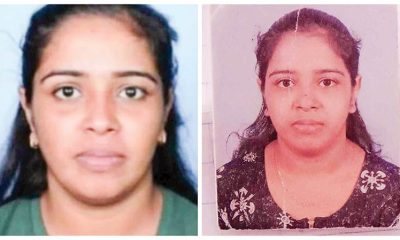
 News7 days ago
News7 days agoKiller made three overseas calls while fleeing
-
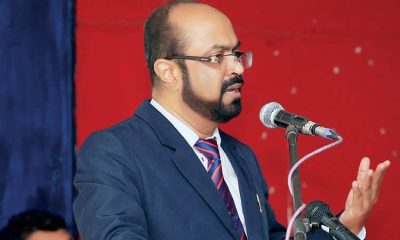
 News6 days ago
News6 days agoSC notices Power Minister and several others over FR petition alleging govt. set to incur loss exceeding Rs 3bn due to irregular tender
-
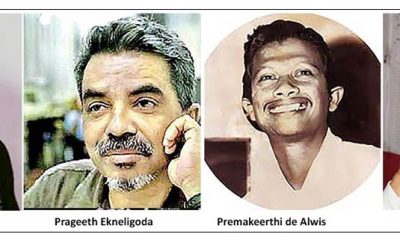
 Features5 days ago
Features5 days agoThe Murder of a Journalist
-
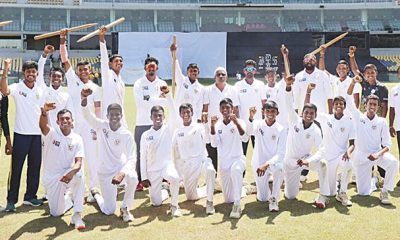
 Sports5 days ago
Sports5 days agoMahinda earn long awaited Tier ‘A’ promotion
-
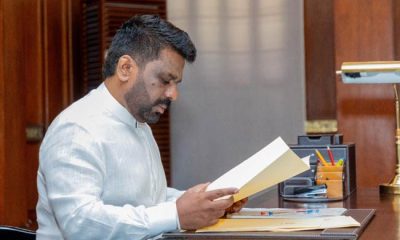
 Features5 days ago
Features5 days agoExcellent Budget by AKD, NPP Inexperience is the Government’s Enemy
-

 News6 days ago
News6 days agoMobile number portability to be introduced in June











